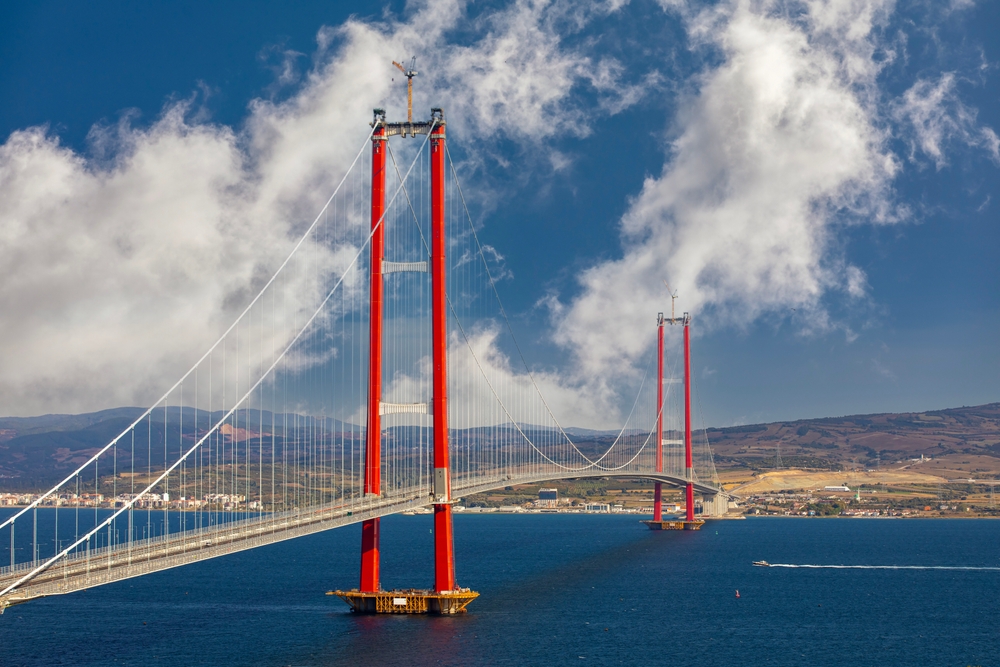Europe and Asia Now Linked by Record-Breaking Suspension Bridge.
Others are reading now
In an impressive feat of engineering, the 1915 Çanakkale Bridge now stands as the world’s longest suspension bridge, spanning the Dardanelles Strait and linking Europe and Asia. This architectural marvel not only signifies a geographical connection but also a monumental reduction in travel time between the two continents, slashing the duration from 90 minutes to a mere six minutes.
Constructed over nearly five years through the collaboration of Turkish and South Korean companies, the bridge symbolizes a significant step towards facilitating travel and commerce.
According to Autojournal, by bridging Gelibolu in Europe and Lapseki in Asia, the structure eliminates the previous reliance on ferry services across this pivotal waterway between the Aegean Sea and the Sea of Marmara in Turkey.
Also read
With a budget of $2.7 billion, the 1915 Çanakkale Bridge is a testament to both nations’ engineering prowess and commitment to progress. “Turkey has now surpassed Japan for the longest mid-span in a suspension bridge, securing the top spot,” proclaimed President Erdogan at the bridge’s opening ceremony, marking a historic achievement for the country.
Echoing this sentiment, South Korean Prime Minister Kim Boo-kyum highlighted the bridge’s symbolic significance, envisioning it as a beacon of peace and prosperity that transcends historical conflicts to connect the East and West.
The bridge’s design is replete with symbolic references, including its total length of 2,023 meters, which commemorates the centennial of the Turkish Republic in 2023. Furthermore, the towers’ height of 318 meters honors the memory of those who fell on March 18 during the Gallipoli campaign, embedding the bridge with deep cultural and historical significance.
This architectural wonder prompts reflection on the absence of similar structures in other parts of the world, such as a bridge across the Amazon River. Despite the apparent utility, experts like Walter Kaufmann from ETH Zurich point out the logistical and practical challenges, including the river’s vast width and the sparse population in adjacent areas, which diminish the necessity for such a project.
The 1915 Çanakkale Bridge stands as a symbol of technological achievement and a bridge towards a future of increased connectivity and understanding between continents.

